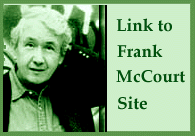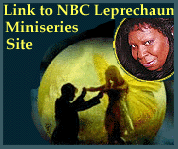Editor's Introduction: Ireland 2000
by
Maria Pramaggiore
North Carolina State University
Copyright © 1999 by Maria Pramaggiore, all rights reserved. This text may be used and shared in accordance with the fair-use provisions of U.S. Copyright law, and it may be archived and redistributed in electronic form, provided that the editors are notified and no fee is charged for access. Archiving, redistribution, or republication of this text on other terms, in any medium, requires the notification of the journal and consent of the author.
- Mary Robinson, former President of Ireland and current UN High Commissioner for Human Rights, was in Washington DC in October, 1999, to receive the State Department’s Fulbright Prize for International Understanding. Robinson is an especially evocative figure of contemporary Irish culture. In fact, her facility with international politics might be traced to her "domestic" experiences as a feminist attorney and senator in the Republic of Ireland during the last three decades, a period of rapid social and economic change. Many developments -- including membership in the European Union, a series of scandals that undermined both religious and secular authority, the peace process in Northern Ireland, and a rapidly growing, internationalizing economy -- have made starkly evident the ways Irish history and cultural theory may contribute to the ongoing project of theorizing postcolonialism, postnationalism, and globalization. Theories and practices associated with diasporic identities, exile and migration, racialization and hybridity, modernity and tradition, nationalism and liberation are relevant to, and may potentially be transformed by, examining Ireland from the perspective of colonialism’s history, aftermath, and continuing influence.
- In Inventing Ireland: The Literature of the Modern Nation (Harvard UP, 1995), Declan Kiberd argues that Ireland, which "once inspired many leaders of the ‘developing’ world, today . . . has much to learn from them" (5). He also speculates that "the introduction of the Irish case to the debate will complicate, extend and in some cases exposes the limits of current models of postcoloniality" (5). In "Translating Tradition," Susan Shaw Sailer’s interview with Declan Kiberd, Sailer and Kiberd discuss some of the ways that the Irish case poses challenges to current models, particularly at this critical moment for Ireland, when, according to Kiberd, three narratives intertwine to invent Ireland yet again: the global, the national, and the local. Kiberd’s profound understanding of the transnational imbrication of these narratives shaps his discussion of Irish cultural production in this special issue of Jouvert.
- The intentionally broad umbrella of "Ireland 2000" was meant to invite ruminations on Irish history and historiography, on material and metaphorical borders, and on colonial and postcolonial dynamics in Ireland, the Irish Diaspora, and wherever Ireland has been invented and enacted. The debates about the importance of Ireland for postcolonial theory and of postcolonial theory’s relevance to Ireland will not be resolved by the html-encoded and graphics-enhanced pages of this electronic text, but, instead, amplified. In this editor’s introduction, I summarize each of the excellent essays in the context of Irish postcoloniality and then offer my own perspective about the critical importance of examining and theorizing the processes inventing Ireland now.
- A desire to interrogate rather than ratify received ideas about Irish historical trauma underlies Richard Haslam’s rich contribution to this special issue. Haslam’s essay examines the way history, literature, popular culture, and contemporary theory represent Ireland as a damaged child. These discourses express colonial dependency and postcolonial melancholy. Haslam argues, however, that certain postcolonial approaches reinforce this tradition of infantilization because they rely on the implicit assumption that the Third World child (Ireland) has grown up into a First World adult. Furthermore, Haslam contends, these discourses posit a monolithic Ireland as an adult whose memories of Third World experiences have been repressed and must be recovered through a (psycho-) analysis of vernacular, collective social practices.
- For Daisy Mules, Sinn Fein Executive Council representative, collective social practices and transnational education and solidarity are a crucial means of intervening in late-twentieth century dynamics informed by historical traces of colonialism and new transnational realities of global capital. Mules’ 1996 interview with the Irish Interest Group at the University of Texas provides a much-needed account of the social, economic, and ideological issues associated with Sinn Fein’s progressive political platform. The Irish Interest Group connects Mules’ political activism to current scholarship on colonialism and postcolonialism. The Group argues that Mules’ ability to connect a wide array of political struggles "including those of women, of the working class (both within Ireland and throughout the world), of gays, lesbians and bisexuals, and of other revolutionary movements" challenges the classical model that posits a transition from colony to nation.
- In the context of a specific Irish political movement that has had "domestic" and international repercussions -- the struggle to redefine sexuality and reproduction -- sociologist Pat O’Connor has surveyed the economic and political state of Irish women. O’Connor’s essay reveals the obstacles and opportunities arising from the crisis of patriarchy and the sweeping shifts taking place as a result of, among other events, the 1973 repeal of the Marriage Bar prohibiting married women from entering paid employment. O’Connor comprehensively documents change and institutional resistance to it, concluding that, despite support for feminist principles and symbols of women’s increasing stake in decision making such as Mary Robinson’s presidency, recent changes in women’s lives have had little impact on Ireland’s religious, government, and business institutions.
- Mike Cronin’s essay on the Gaelic Athletic Association (GAA) also suggests that residual elements in Irish culture have been overlooked in contemporary critical accounts of a progressive, postnationalist Ireland. Cronin convincingly argues that discourses of modernism, postnationalism, and postcolonialism rely on a bifurcation of -- or, in Kiberd’s terminology, a reinvention of -- "old" and "new": "The old Ireland was dominated by gunmen, clerics, parochial politicians and an obsession with insularity. The new Ireland is aware of the global, pro-European and inclusive." For Cronin, certain Irish institutions like the GAA do not challenge the colony-to-nation model as Mules’ work does, but rather, are "still locked in Fanon’s journey, caught somewhere between liberation and the nation. Until that journey is completed, the GAA’s discourse . . . will continue to be shaped by the language of the colony."
- The contingent relation between discourse and ideology plays a role in the invention of Ireland in visual culture as well. James Morrison’s essay looks at the complex ways that Alfred Hitchcock’s film language subverts Irish national narratives and situates history as both pastness and presence. Morrison argues for an Irish reading of Sir Alfred Hitchcock -- whose auteur status prior to this ground-breaking essay rested upon the British-American axis of his pedigree, with his Catholicism duly noted and denied. In Morrison’s view, Hitchcock’s Ireland is inventively deconstructive: in Under Capricorn and Juno and the Paycock, artifice and anti-illusionism "reflect on national identity as a form of performance that undermines essentialist notions of nationality and thereby – whether ‘consciously’ or ‘unconsciously’ – implicitly . . . subjects the colonial discourses of British imperialism to critique."
- Catherine Wynne provides a fresh perspective on the literary encoding of Irish history in dialectical relation to British imperial discourses. Wynne’s essay places meticulous historical research along side the early stories of Sir Arthur Conan Doyle (the consummate Englishman, possibly because of his Irish and Scots affiliations) to analyze their representations of murderous secret societies modeled after the Molly Maguires.
- Lauren Onkey’s essay also considers the representational politics of disappearing Irishness at the turn of the last century -- but in the context of performances of Ned Harrigan’s plays. Her comprehensive study builds on recent labor history regarding white privilege, labor relations, and race in the nineteenth-century US. Onkey analyzes Harrigan’s plays, arguing that "blacks have played an important imaginative and symbolic role in the definition of Irish-American identity." Harrigan’s work "featured black and Irish characters interacting . . . and created more positive images of the Irish on stage than had been seen previously." Onkey situates Harrigan’s representation of African Americans in relation to " ‘the social need’ of improving the image of the Irish." Onkey's work historicizes the role of performance in the invention and erasure of national and racial identity.
- Michael Malouf’s essay expands upon invention and iconography by investigating the culture industry surrounding the artist as national symbol. Malouf considers the variety of ways James Joyce has been produced and consumed at home and abroad -- in the tourist industry, in literary studies, and most recently on Irish money. Malouf elegantly handles Joyce’s image on the Irish ten pound note by recognizing that Joyce’s currency and Yeats’s devaluation are related to ideologies of national identity, to the importance of the artist in Irish culture, and to complementary and contradictory discourses of cultural decolonization and postcolonialism.
- This business of Joyce’s multivalent iconography is matched in Eugene O’Brien’s provocative work on Joyce: O’Brien’s essay considers the trope of emigration in the literature of Joyce and Seamus Heaney. In their work, O’Brien claims, "the notion of the emigrant creates a space for an epistemological position from which the essentialist notions of Irish identity can be subjected to transformation." The emigrant figure pluralizes identity, O’Brien continues, allowing "an ‘other’ to be added to Irishness" and problematizes the relation between "scatterings and [the] centre."
- The relationship of center, periphery and scattering, in terms of both cultural identity and generic form, is critical to postcolonial resistance in recently invented Irelands, according to Stanley Orr’s exciting essay on Mike Newell’s film Into the West (1992). Orr’s essay makes the case that the film creates a textual space for a postcolonial imagination by "recombining genres" in a way that attends to the representational politics of both Irish history and film history. Orr writes that "Newell elaborates this melodramatic struggle [of disenfranchised Irish Travellers] by carefully juxtaposing cinematic styles and genres. On one level, Newell incorporates a grittily Realistic presentation of Dublin's poor with a highly Formalistic treatment of Irish myth and legend. At the same time, he also synthesizes the generic conventions of fantasy with those of the American Western, ultimately reclaiming a genre traditionally complicit with imperialist expansion."
- It is my hope that this special issue, with its compelling and diverse essays, interviews, and book reviews on Irish culture and history, contributes to the growing body of work that reconceptualizes the relations between and among colonization, nationalism, culture, and history. The timing of this special issue is particularly important because of the powerful identity-through-consumption imperative of expansive, global capitalism.
 For example, I began my introduction to this issue by making reference to Mary Robinson -- whose name is probably less well-known outside Ireland than that of Frank McCourt, whose well-received Angela’s Ashes and follow-up memoir 'Tis have both topped The New York Times’ bestseller’s list. Were I less convinced by Fredric Jameson’s argument that postmodernity is defined by the eclipse of the political by the cultural, I might wonder if the popularity of McCourt’s and other Irish memoirs is related to the Northern Ireland peace process, made more salient to US citizens by Senator George Mitchell’s role and the historic handshake between Gerry Adams and Bill Clinton. Yet I seriously doubt that the 1998 Belfast Agreement,
For example, I began my introduction to this issue by making reference to Mary Robinson -- whose name is probably less well-known outside Ireland than that of Frank McCourt, whose well-received Angela’s Ashes and follow-up memoir 'Tis have both topped The New York Times’ bestseller’s list. Were I less convinced by Fredric Jameson’s argument that postmodernity is defined by the eclipse of the political by the cultural, I might wonder if the popularity of McCourt’s and other Irish memoirs is related to the Northern Ireland peace process, made more salient to US citizens by Senator George Mitchell’s role and the historic handshake between Gerry Adams and Bill Clinton. Yet I seriously doubt that the 1998 Belfast Agreement,  whose ratification has been called the most important event in Irish history this century since 1921 (the end of the war for Independence), is responsible for the US appetite for things Irish.
whose ratification has been called the most important event in Irish history this century since 1921 (the end of the war for Independence), is responsible for the US appetite for things Irish.
- In more general terms, consuming Ireland in the late 1990s has become big business. For example, there is the kinetic Irishness that is Riverdance: The Show, the dance and musical revue that began with Moya Doherty and Bill Whelan’s seven-minute television segment in 1994 and catapulted itself onto the international stage replete with Lords of the Dance and Druidic backdrops.
 If Riverdance, with its Celtic mysticism and acrobatic celebration of Irish migration inspires a desire for transatlantic motion, I can combine U2 fandom with Emerald Isle tourism using a website that offers a map of "U2’s Dublin," for a potentially Bloomsday-like experience.
If Riverdance, with its Celtic mysticism and acrobatic celebration of Irish migration inspires a desire for transatlantic motion, I can combine U2 fandom with Emerald Isle tourism using a website that offers a map of "U2’s Dublin," for a potentially Bloomsday-like experience.  Or, if I were interested in making money, I might contact the Irish Pub Company and have them ship a complete and authentic Irish pub. In eight short years, the company advertises, it has satisfied the thirst of over 350 investors in more than 40 countries. One of their selling points is the fact that "Ireland and things Irish are very attractive to consumers. Ireland has a high profile with the international success of Irish bands, Irish writers, Irish plays, Irish actors, Irish movies." Here at home in North Carolina’s Raleigh-Durham-Chapel Hill area, I can point to the W.B, Yeats, the James Joyce, the Kelt, Ri Ra, and Tir na nOg.
Or, if I were interested in making money, I might contact the Irish Pub Company and have them ship a complete and authentic Irish pub. In eight short years, the company advertises, it has satisfied the thirst of over 350 investors in more than 40 countries. One of their selling points is the fact that "Ireland and things Irish are very attractive to consumers. Ireland has a high profile with the international success of Irish bands, Irish writers, Irish plays, Irish actors, Irish movies." Here at home in North Carolina’s Raleigh-Durham-Chapel Hill area, I can point to the W.B, Yeats, the James Joyce, the Kelt, Ri Ra, and Tir na nOg.  In total, five Irish pubs have opened in our southeastern mesolopolis since 1996.
In total, five Irish pubs have opened in our southeastern mesolopolis since 1996.
- In documenting my fascination and horror with contemporary opportunities to consume Ireland, a consistent pattern emerges through which I have learned to consume Ireland and its history. That pattern is one this special issue is intended to dismantle. The narrative involves a doubled trope whose logic is decidedly additive, offering both sides of a sharply oppositional "either/or" divide: old/new, magical/ real, medieval/ modern, pastoral/paramilitary. Encountering this Ireland involves nostalgic identification -- often but not exclusively through the gratification of genealogical desire. The latter was brought home tragically with the death of John F. Kennedy, Jr. The American nation underwent an increasingly familiar ritual, a mediated mourning as a nation, for a person the Irish press called heir to an Irish-American dynasty and whom Pete Hamill described as "The handsome prince of the Irish Diaspora" (The New Yorker, August 2, 1999, 26). I wonder if the fact that the now-tarnished King of Camelot sired an independent and as-yet untried Irish prince had something to do with the profound emotions John Jr.’s death evoked.
- I acquired my own genealogical nostalgia for Ireland from my mother, but also recognize its implication in my white US entitlement. Inheritance is only partly to blame for my suspiciously positive response to notions of hybridity and porous identity. In hybrid mode, I’m not an "American"; I came from elsewhere, a racially unproblematic elsewhere I may imaginatively and economically lay claim to with the certitude of manifest destiny. This is an elsewhere I might proudly reference in an autobiography, though, ironically, that conceit seems to be the necessary and sufficient condition for establishing credentials as an "American" —if you are white enough.
- Descended from the Norman invader Lacys, my mother could make no ultimate claim to either "Irish-Irishness" or "Anglo-Irishness" but cheerfully fulfilled her diasporic duties when it came to Catholicism and Bailey’s Irish Cream. (It may have begun in self-defense: the 1970s were the decade of the Rocky films and my first-generation Italian-American father owned at least one "Italian Stallion" t-shirt). As part of my birthright and cultural entitlement, I absorbed the sentimentality of images both from my mother’s repertoire and from mass culture. On the one hand, the leprechaun -- evidence of medieval magical realism -- who hawked the breakfast cereal "Lucky Charms" was a staple in my suburban imagination, nourished primarily by television images.
 On the other, I was fed images of protest, occupation, and the "inexplicable" violence in the streets of Belfast and Derry in Northern Ireland via satellite. Coverage was less-than-continuous, unlike our post-CNN era. I suspect there’s a reason for the spotty coverage of Ireland even now: exposed to more information, I, and others like me, might have to relinquish those pink hearts and green clovers.
On the other, I was fed images of protest, occupation, and the "inexplicable" violence in the streets of Belfast and Derry in Northern Ireland via satellite. Coverage was less-than-continuous, unlike our post-CNN era. I suspect there’s a reason for the spotty coverage of Ireland even now: exposed to more information, I, and others like me, might have to relinquish those pink hearts and green clovers.
- We are loath to do so, however. Exhibit A: the recent spy parody Austin Powers: International Man of Mystery (1997). One of the arch-villain Dr. Evil’s ill-fated henchpeople, Patty O’Brien, is a film Irishman, a descendent of the stage Irishman and a kissing cousin of slavering Irish thugs in recent films like Ronin (1998), The Devil’s Own (1997), Blown Away (1994), and Patriot Games (1992).
 Patty is more than a one-dimensional stereotype, however. In fact, he has precisely two sides: he not only dons the terrorist-chic black regalia of the IRA, but his criminal signature is that he leaves silver charms at the scene of his crimes. Snarling "they’re always after me lucky charms," Patty not only unites the pastoral and paramilitary, but also contributes to a tradition of exposing the grotesque underbelly of the "little people" begun by Warrick Davis in the leprechaun horror franchise (Leprechaun [1993], Leprechaun 2: Flender’s Fortune [1994], Leprechaun 3: Welcome to Vegas [1995], and Leprechaun 4: In Space [1996]). Word on the net
Patty is more than a one-dimensional stereotype, however. In fact, he has precisely two sides: he not only dons the terrorist-chic black regalia of the IRA, but his criminal signature is that he leaves silver charms at the scene of his crimes. Snarling "they’re always after me lucky charms," Patty not only unites the pastoral and paramilitary, but also contributes to a tradition of exposing the grotesque underbelly of the "little people" begun by Warrick Davis in the leprechaun horror franchise (Leprechaun [1993], Leprechaun 2: Flender’s Fortune [1994], Leprechaun 3: Welcome to Vegas [1995], and Leprechaun 4: In Space [1996]). Word on the net  has it that Ice T is slated to co-star in the upcoming Leprechaun 5: In the Hood. The convergence of pre- and postmodern tropes of Ireland and produces the post-urban gangsta leprechaun.
has it that Ice T is slated to co-star in the upcoming Leprechaun 5: In the Hood. The convergence of pre- and postmodern tropes of Ireland and produces the post-urban gangsta leprechaun.
- An ostensible pop-culture throwaway like that -- which may be matched by an upcoming NBC special, "The Magical Legend of the Leprechauns" (starring Whoopi Goldberg as the Grand Banshee, Randy Quaid as an American visitor to Ireland, and Roger Daltrey as the King of the Fairies) -- shows that reinventing Ireland as 'little people of indeterminate race' continues to titillate the transatlantic imaginary.
 In more serious terms, these products need to be read in terms of the new analytical frameworks this special issue contains–does the racial juxtaposition perform the cultural work that Lauren Onkey attributes to Ned Harrigan’s plays, for example? How might Stanley Orr read the conjunction of gangster genre and (grotesque) magical realism in postcolonial?
In more serious terms, these products need to be read in terms of the new analytical frameworks this special issue contains–does the racial juxtaposition perform the cultural work that Lauren Onkey attributes to Ned Harrigan’s plays, for example? How might Stanley Orr read the conjunction of gangster genre and (grotesque) magical realism in postcolonial?
- This foray into contemporary popular consumption of Irish identities and associated ruminations and speculations are a means of suggesting the importance of taking seriously the discourses through and contexts in which Ireland continues to be invented and consumed, both popular and academic. And to reiterate that the project of querying postcolonial studies is not simply ivory-tower solipsism but rather has the potential to affect the inventions and receptions of national and transnational practices, institutions, and identities in the next millenium.
Back to Table of Contents, Vol. 4 Issue 1
Back to Jouvert Main Page
 For example, I began my introduction to this issue by making reference to Mary Robinson -- whose name is probably less well-known outside Ireland than that of Frank McCourt, whose well-received Angela’s Ashes and follow-up memoir 'Tis have both topped The New York Times’ bestseller’s list. Were I less convinced by Fredric Jameson’s argument that postmodernity is defined by the eclipse of the political by the cultural, I might wonder if the popularity of McCourt’s and other Irish memoirs is related to the Northern Ireland peace process, made more salient to US citizens by Senator George Mitchell’s role and the historic handshake between Gerry Adams and Bill Clinton. Yet I seriously doubt that the 1998 Belfast Agreement,
For example, I began my introduction to this issue by making reference to Mary Robinson -- whose name is probably less well-known outside Ireland than that of Frank McCourt, whose well-received Angela’s Ashes and follow-up memoir 'Tis have both topped The New York Times’ bestseller’s list. Were I less convinced by Fredric Jameson’s argument that postmodernity is defined by the eclipse of the political by the cultural, I might wonder if the popularity of McCourt’s and other Irish memoirs is related to the Northern Ireland peace process, made more salient to US citizens by Senator George Mitchell’s role and the historic handshake between Gerry Adams and Bill Clinton. Yet I seriously doubt that the 1998 Belfast Agreement,  whose ratification has been called the most important event in Irish history this century since 1921 (the end of the war for Independence), is responsible for the US appetite for things Irish.
whose ratification has been called the most important event in Irish history this century since 1921 (the end of the war for Independence), is responsible for the US appetite for things Irish. If Riverdance, with its Celtic mysticism and acrobatic celebration of Irish migration inspires a desire for transatlantic motion, I can combine U2 fandom with Emerald Isle tourism using a website that offers a map of "U2’s Dublin," for a potentially Bloomsday-like experience.
If Riverdance, with its Celtic mysticism and acrobatic celebration of Irish migration inspires a desire for transatlantic motion, I can combine U2 fandom with Emerald Isle tourism using a website that offers a map of "U2’s Dublin," for a potentially Bloomsday-like experience.  Or, if I were interested in making money, I might contact the Irish Pub Company and have them ship a complete and authentic Irish pub. In eight short years, the company advertises, it has satisfied the thirst of over 350 investors in more than 40 countries. One of their selling points is the fact that "Ireland and things Irish are very attractive to consumers. Ireland has a high profile with the international success of Irish bands, Irish writers, Irish plays, Irish actors, Irish movies." Here at home in North Carolina’s Raleigh-Durham-Chapel Hill area, I can point to the W.B, Yeats, the James Joyce, the Kelt, Ri Ra, and Tir na nOg.
Or, if I were interested in making money, I might contact the Irish Pub Company and have them ship a complete and authentic Irish pub. In eight short years, the company advertises, it has satisfied the thirst of over 350 investors in more than 40 countries. One of their selling points is the fact that "Ireland and things Irish are very attractive to consumers. Ireland has a high profile with the international success of Irish bands, Irish writers, Irish plays, Irish actors, Irish movies." Here at home in North Carolina’s Raleigh-Durham-Chapel Hill area, I can point to the W.B, Yeats, the James Joyce, the Kelt, Ri Ra, and Tir na nOg.  In total, five Irish pubs have opened in our southeastern mesolopolis since 1996.
In total, five Irish pubs have opened in our southeastern mesolopolis since 1996.  On the other, I was fed images of protest, occupation, and the "inexplicable" violence in the streets of Belfast and Derry in Northern Ireland via satellite. Coverage was less-than-continuous, unlike our post-CNN era. I suspect there’s a reason for the spotty coverage of Ireland even now: exposed to more information, I, and others like me, might have to relinquish those pink hearts and green clovers.
On the other, I was fed images of protest, occupation, and the "inexplicable" violence in the streets of Belfast and Derry in Northern Ireland via satellite. Coverage was less-than-continuous, unlike our post-CNN era. I suspect there’s a reason for the spotty coverage of Ireland even now: exposed to more information, I, and others like me, might have to relinquish those pink hearts and green clovers.  Patty is more than a one-dimensional stereotype, however. In fact, he has precisely two sides: he not only dons the terrorist-chic black regalia of the IRA, but his criminal signature is that he leaves silver charms at the scene of his crimes. Snarling "they’re always after me lucky charms," Patty not only unites the pastoral and paramilitary, but also contributes to a tradition of exposing the grotesque underbelly of the "little people" begun by Warrick Davis in the leprechaun horror franchise (Leprechaun [1993], Leprechaun 2: Flender’s Fortune [1994], Leprechaun 3: Welcome to Vegas [1995], and Leprechaun 4: In Space [1996]). Word on the net
Patty is more than a one-dimensional stereotype, however. In fact, he has precisely two sides: he not only dons the terrorist-chic black regalia of the IRA, but his criminal signature is that he leaves silver charms at the scene of his crimes. Snarling "they’re always after me lucky charms," Patty not only unites the pastoral and paramilitary, but also contributes to a tradition of exposing the grotesque underbelly of the "little people" begun by Warrick Davis in the leprechaun horror franchise (Leprechaun [1993], Leprechaun 2: Flender’s Fortune [1994], Leprechaun 3: Welcome to Vegas [1995], and Leprechaun 4: In Space [1996]). Word on the net  has it that Ice T is slated to co-star in the upcoming Leprechaun 5: In the Hood. The convergence of pre- and postmodern tropes of Ireland and produces the post-urban gangsta leprechaun.
has it that Ice T is slated to co-star in the upcoming Leprechaun 5: In the Hood. The convergence of pre- and postmodern tropes of Ireland and produces the post-urban gangsta leprechaun.
 In more serious terms, these products need to be read in terms of the new analytical frameworks this special issue contains–does the racial juxtaposition perform the cultural work that Lauren Onkey attributes to Ned Harrigan’s plays, for example? How might Stanley Orr read the conjunction of gangster genre and (grotesque) magical realism in postcolonial?
In more serious terms, these products need to be read in terms of the new analytical frameworks this special issue contains–does the racial juxtaposition perform the cultural work that Lauren Onkey attributes to Ned Harrigan’s plays, for example? How might Stanley Orr read the conjunction of gangster genre and (grotesque) magical realism in postcolonial?